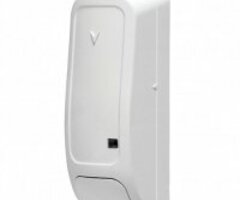PowerG Door & Window Security Sensors

PowerG Door and Window Security Sensors represent a very important addition to any security system that can support PowerG devices. These are door and window sensors that communicate at the PowerG wireless frequency of 915 MHz. These sensors come with all the great advantages of PowerG, which makes them a strong addition to nearly any compatible alarm system. There are many reasons to choose PowerG Door and Window Alarm Sensors for your home or business. And with the diversity of this lineup, there are many options to choose from.
Wireless door and window sensors have been around the security industry for quite some time now. It's fair to wonder exactly how PowerG Door and Window Sensors are different from other wireless options. There are actually many reasons why the PowerG Sensors are some of the best security devices available today. For one, these door and window sensors boast an extremely impressive wireless range. You can use these sensors from up to 2km away with certain systems in an open air environment with no add-ons being required. Adding a PowerG Repeater will let you effectively double this already impressive to a maximum distance of 4km in open air.
PowerG Door and Window Contacts are also extremely secure. These sensor utilize 128-bit AES encryption in all their wireless communication. This makes them nearly impossible for others to hack or takeover wirelessly. The same cannot be said for non-encrypted sensors, which can theoretically be taken over and controlled by savvy intruders. Although wireless hacking is relatively uncommon, it can still provide an end use with peace of mind in knowing that they have an extra layer of security available.
When using PowerG Door and Window Security Sensors, it is recommended that you auto-enroll these devices with your alarm system. There is a special trick when it comes to auto-enrolling a PowerG Sensor for use with an alarm system. After putting the system into its auto-enrollment mode, you need to press and hold the enrollment button on the sensor. This button is usually hidden underneath the main cover for the device. You should press and hold the button until the appropriate LED light appears. You may need to hold the button across multiple LED light cycles.
Like most door and window contact sensors, the PowerG Door and Window Contacts consist of a sensor and a magnet. The sensor should go on the door or window frame, while the magnet should go on the moving portion of the structure. Opening the door or window will cause the magnet to become separated from the sensor. This will release a reed switch inside the sensor. The sensor will then transmit a signal to the alarm panel. For this to work properly, the sensor and magnet must be very close together when the door or window is closed. Ideally, they should be in direct contact. This is why these devices are called "contacts". There are also some PowerG Contacts that have a hardwired terminal for supporting a single Normally Closed (NC) hardwired contact sensor and having it communicate with the panel wirelessly.






